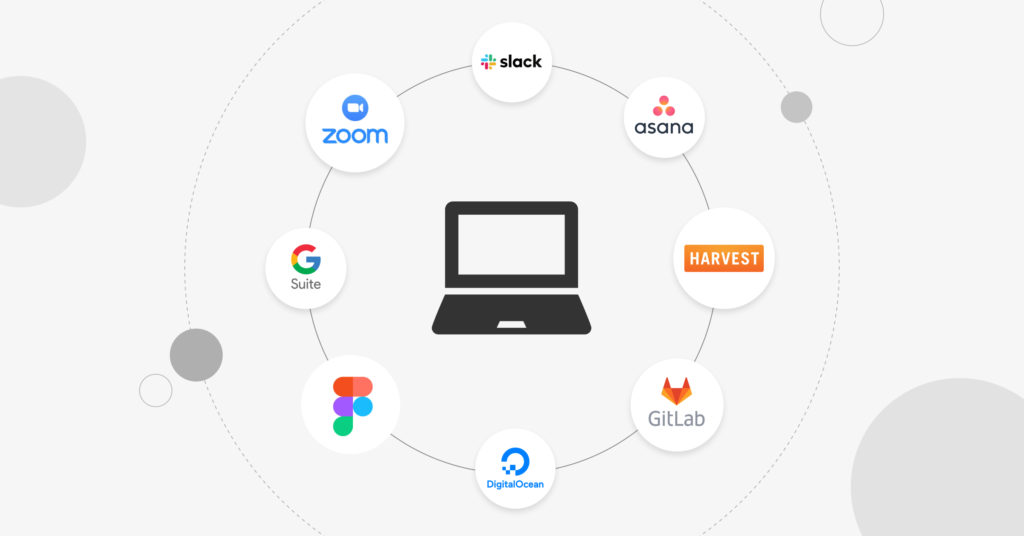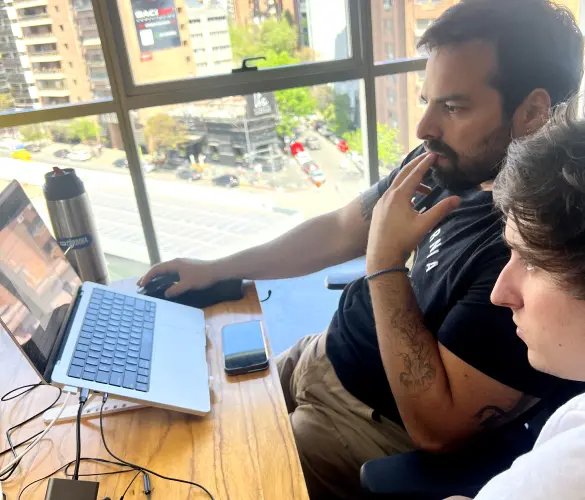- Blogs
- Behind the Canvas
- Remote Team Communication for 2020: 8 Online Tools We Use and Love
Behind the Canvas / 5 min read
Remote Team Communication for 2020: 8 Online Tools We Use and Love
Managing remote teams was never more relevant. Learn all about how our software development team uses online communication tools to have the most productive virtual workplace.

Remote teams rely on online communication tools. From video conferences and messaging apps to shared documents and files. Yet, finding the perfect collaboration tools for your team is not an easy job.
Despite the abundance of communication tools, the practicality of walking over to a coworker’s desk to solve a problem is not easily replicated online. Miscommunications are bound to happen when your team isn’t in the same room as you are. Texts, emails, and video conferences are just not enough.
At White Canvas, we are compromised with the idea of making remote work the most efficient we can. That is why we are constantly incorporating new collaboration tools to help us better tackle our projects. These are the tools we know and love.

Our Favorite Remote Tools
1. Zoom
our new virtual office
Zoom became our virtual office when we needed it the most. Of the plenty of videoconferencing apps (Skype, Google Meets, to mention a few), Zoom has become our weapon of choice.
Why? Zoom’s advantage is that it is a one-size-fits-all solution for our company’s video calling needs.
Zoom’s standout features include the following:
- The best video and audio quality to see and hear our coworkers as if we were in the same room.
- Practically unlimited participants leave nobody out.
- Collaboration tools such as screen-sharing and annotations for everyone to participate.
- Reactions and virtual backgrounds for more interactive meetings.
It’s no surprise that Zoom is the second most downloaded app in 2020.
2. Slack
Slack is not only an instant messaging app. It is a pioneer in internal communication tools for the workplace. For a team that spends most of its working hours in front of a computer, a solid real-time messaging app is a must-have.
We use Slack for internal and external communications. We have channels for different teams and projects, so all conversations stay on-topic, and our team only receives relevant messages.
Plus, we love Slack’s techy features – its integration with almost every other workplace productivity app and the use (or abuse) of the Slackbot. For us, these features make the difference compared to other text messaging platforms, emailing, or texting. Slack has become our #1 communication tool.
3. Asana
for flawless organization
Being organized is our topmost priority, and Asana helps us do just that.
Project management with Asana allows us to keep track of our projects on a granular level. We create a board for each project and assign tasks to team members. It allows us to monitor progress and deadlines and for team members to check the development of different projects at a glance.
It’s very useful in keeping projects organized and accessible since all dialogues are stored within each task. Ever lost a conversation among the endless flow of messages and emails? Thanks to the comment section for each task, Asana is great at avoiding that.
4. Harvest
for time efficiency
If you can measure it, you can improve it.
That is what Harvest does: it measures time. How much time are we spending on each project? How much are they costing us? We no longer have to ask these questions, thanks to Harvest.
Harvest is a time-tracking software with the simple role of measuring how many hours (or minutes, or days) each member spends on each project and task. It also has a pretty neat integration with Asana.
Understanding where our time is spent is the key to improving our processes. Harvest provides lots of insights into how time is spent, and it helps us keep our projects healthy.
5. GitLab
where the code lives
All White Canvas code lives in GitLab, the best web platform for hosting project source codes.
Thanks to GitLab, our team can work remotely and simultaneously on their own branches of code. All branches can then be safely merged to build the final version of the project. We don’t know what our software development life cycle would be like without GitLab.
The best thing about GitLab is how it increases our team’s productivity. We have developed an automation process that deploys easily and makes us super effective. This tool has also improved the traceability of our progress, helping us manage our source code over time.
6. DigitalOcean
where our projects live
Flexible, powerful, and scalable, DigitalOcean also plays a fundamental role in White Canvas’ software development life cycle.
DigitalOcean is a cloud hosting provider focused on simplifying web infrastructure for software developers. It has grown to become one of the most popular cloud hosting services thanks to its servers’ simplicity and its reliable infrastructure. DigitalOcean’s best quality is its dev-friendly user interface.
This is why DigitalOcean is our go-to server for most projects. And we are not alone here: currently, 1,298,107 sites are running on DigitalOcean worldwide.
7. Figma
where the design happens
Figma is a cloud-based design and prototyping tool whose key differentiator is the ability to work with teams in live, real-time collaboration.
Figma is the Google Docs of design: all users viewing the file are shown in the top right-hand corner of the app, and users can view what coworkers are editing as they are doing it.
Being able to collaborate in real-time and easily share designs with developers and clients has made Figma our number one design tool. White Canvas’ UX/UI design wouldn’t be the same without it.
8. G-Suite
for everything else
No explanation is needed here: Gmail, Docs, Calendar, Meet, Drive, Keep. Shared documents, shared folders, shared schedules, shared notes. Who doesn’t love Google Suite?
G-Suite has been there for us since the very beginning. And there’s nothing quite like it out there, so we’re going to be sticking with it for a while.

Our Tools Make Us Better
Good communication and efficient collaboration are the keys to remote team success. Whether among colleagues, clients, or prospects, these tools allow our projects to flow even when we are working in different places, countries, or time zones.
This is how we work at White Canvas. We love our tools! When combined and used appropriately, they create an amazing virtual workspace where teamwork is not constrained by physical distance.
What are your favorite online communication tools?
Related Articles

Behind the Canvas / 10 min read
Behind the Canvas / 10 min read
Everything You Need to Know About WordPress Outsourcing
Professional WordPress development takes time, effort, and very specific knowledge. That’s why more and more businesses are turning to outsourcing the creation of their sites instead of hiring in-house teams,…
Read More
Behind the Canvas / 4 min read
Behind the Canvas / 4 min read
Time Management for Technical Leaders: 4 Techniques to Stay Focused and Organized
The tech industry is very fast-paced, especially when you're a technical leader and have dozens of tasks to achieve daily. That is why, for technical leaders, time management skills are…
Read More
Behind the Canvas / 3 min read
Behind the Canvas / 3 min read
The Benefits of Building a High-Trust WordPress Team
Fostering a collaborative and high-trust WordPress development team is a big challenge for business leaders. However, the benefits are worth it: improved performance, faster problem-solving, and, ultimately, more successful projects.…
Read More
Behind the Canvas / 3 min read
Behind the Canvas / 3 min read
The 3 Lessons I Learned Going From WordPress Developer to Tech Lead
Transitioning from a WordPress developer role to a technical lead has been a process of learning, facing challenges, and growing professionally and personally. In this article, I share my experiences,…
Read More
Behind the Canvas / 10 min read
Behind the Canvas / 10 min read
How We Use Semrush to Increase Traffic to Our WordPress Blog
Semrush is a search engine marketing (SEM) platform that gives you the data you need to increase traffic to your WordPress-themed blog, even with only the free version. In this…
Read More